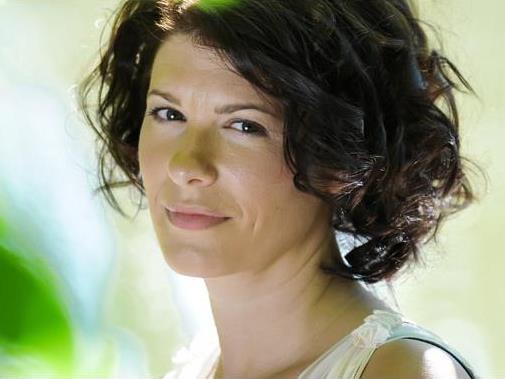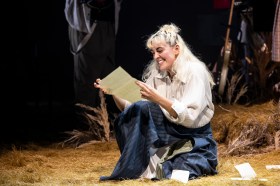Deserving of a much larger audience, the collaboration of Asher Fisch with German mezzo-soprano, Stefanie Irányi provided an unusual treat for those who were not seduced by the many rival attractions offered by the Melbourne Festival.
Asher Fisch is not only a most accomplished accompanist, he is also a fluent and erudite speaker. His discussion of the relative merits and shortcomings of these two titans of Romantic music reflected a detailed appreciation of both. In the end, it was difficult to say which composer he preferred, although in terms of mastery of form it was Brahms who came out a clear winner. As far as daring and pushing musical boundaries then Wagner took the honours, especially after spending six weeks closeted with Liszt and changing musical tack completely. Given Fisch’s track record as a conductor, it would appear that Wagner’s creative genius and eventual mastery of a new operatic form might be nearer his heart.
Using the huge screen at the back of Elisabeth Murdoch Hall, Fisch illustrated his insights with photographs, lyrics and excerpts from scores. His struggles with a recalcitrant remote control interrupted the flow at times, but did not detract unduly from this happy marriage of lecture and recital. Some less common images of Wagner and Brahms at the age of twenty brought home the extraordinary precocity of Brahms and why Wagner might have envied him.
Of course, by far the most important part of the evening was the performance of the music itself. The concert began with a performance of the stormy, passionate Brahms song ‘Wehe, so willst du mich wieder’. Stefanie Irányi, is one of the rising stars of the world’s concert and opera stages. From the outset it was clear that, with her fine musicality and vocal technique, she would be able to demonstrate the nuances revealed by Fisch. Her voice and demeanour were expressive without being overdone and her covered, high pianissimos gleamed. Being a native German speaker, her diction was spot on, she understood every word and provided the appropriate colour. Even though the music was paramount for Brahms, it was difficult to ignore the fact that her assimilation of the text and the way she communicated it were integral to the emotional response of the audience. This tended to challenge Schumann’s claim that the young Brahms wrote ‘songs, whose poetry one would understand without knowing the words’.
The relative importance of text and music was at the heart of the debate between the Brahms camp and the Wagner camp. To illustrate how words can be filtered through the mind to direct emotion, Irányi sang two versions of Gluck’s ‘Che farò senza Euridice’, the first with the original text and the second with a joyful English text. What we had regarded as being the ultimate sad song became quite a different creature with this change. According to Brahms, we should listen to the music as an abstract, absolute entity. Fisch’s eloquent piano examples helped the audience to do exactly that as he examined the musical language of both composers and its development. With his free flowing rhythmic pulse and his ability to emphasise key elements of the musical structure, it was possible to absorb details of compositional style. To illustrate these features, Fisch used three examples from different stages of Brahms’ development and asked the audience to determine their chronological sequence.
A charming personal touch was included with Irányi singing ‘Da unten im Tale’, a tender, melancholy song, which Brahms based on a Bavarian folk tune. Since that is her birthplace, she brought a special brand of emotional connection to it.
While Brahms strove to perfect traditional forms, Wagner broke the rules. Tristan and Isolde was a turning point and sketches for these constitute part of his Wesendonck Lieder. Irányi’s heartfelt performance of these gems was beautifully controlled; her interpretation will undoubtedly find its way onto her growing discography in the near future. Needing no further commentary, it was a most satisfying way of ending the concert.
Although this ‘illustrated lecture’ officially concluded with Wagner’s Wesendonck Lieder, it was Schubert who had the last word in the sole encore item. His gloriously melodic ‘Der Musensohn’ made a fitting postscript as a cheerful celebration of German song.
Rating: 4 stars out of 5
Brahms v Wagner: Brahms and Wagner in Song
Asher Fisch, pianist and lecturer
Stefanie Irányi, mezzo-soprano
Brahms:
‘Verzagen’
‘Auf dem Kirchhofe’
‘Meerfahrt’
‘Salamander’
‘Da unten im Tale’
Wagner:
Wesendonck Lieder
Melbourne Recital Centre
Friday 18 October
Melbourne Festival 2013
www.mwlbournefestival.com.au
11-27 October
Photo: Stefanie Irányi





